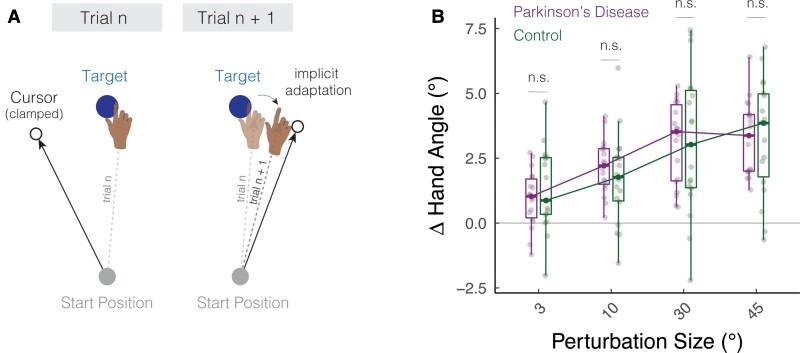Figure 1.
Parkinson’s disease does not impact implicit adaptation in response to a wide range of error sizes. (A) Schematic of the task. The cursor feedback (hollow black circle) was rotated relative to the target, independent of the position of the participant’s hand. The size of the rotation was varied randomly on a trial-by-trial basis. (B) Average change in hand angle on the subsequent trial is plotted as a function of the rotation size for Parkinson's disease and control participants. Box plots denote the median (thick horizontal lines), quartiles (first and third, the edges of the boxes) and extrema (min and max, vertical thin lines). The individual means are shown as translucent circles. n.s. denotes that the group comparison between Parkinson's disease and controls is not significant.

